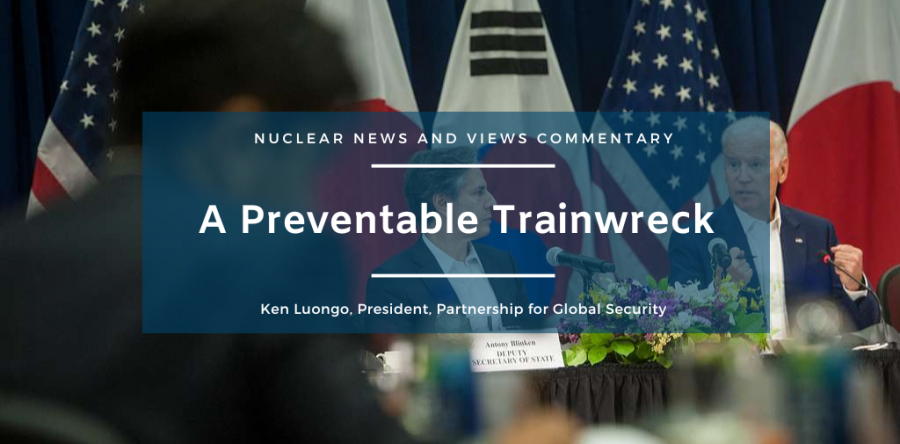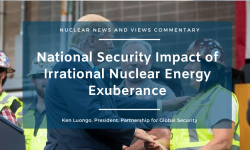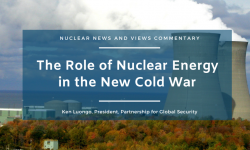U.S. and South Korean nuclear energy companies have been on a collision course over new international reactor sales for the last three years. Now, this totally preventable trainwreck has come to a head and been hurled into court.
The fuse for this fight was lit by the competition for reactor construction in Saudi Arabia. But the explosion occurred over the pending decision by Poland to purchase up to six new nuclear power plants to replace its dependence on Russian energy.
Washington and Seoul have failed by letting this open wound fester for so long, and potentially leaking bile into other areas of an essential bilateral relationship during an extremely perilous period. As global dangers mount, the timing could not be worse for two critical Western allies to be clashing over high-technology intellectual property.
The lawsuit, initiated by Westinghouse against KEPCO and KHNP, states that the Korean APR-1400 reactor and derivative technologies contain technology Westinghouse licensed to the companies in the past and that is subject to export authorization by the U.S. government.
Westinghouse claims that it is legally responsible for the export of the technology in question, must provide reporting on transfers of information and technology to the U.S. government, and is subject to potential penalties if U.S. export controls are violated.
The Korean companies assert that they have indigenized all of the APR-1400 technologies and therefore are not subject to U.S. export laws. This has been the stalemated skirmish line since the middle of the Trump administration, and it has frozen all government-supported civil nuclear cooperation between the two countries.
This state-of-play has not been addressed by the Biden administration despite clear signals from the new South Korean president touting the role of his nuclear industry for domestic energy and international sales.
Perhaps the bureaucracies on both sides thought that a joint summit agreement by the leaders to work together on nuclear exports was enough to paper over the fight. If so, that was wrong.
The problem for the Koreans is that, as the Westinghouse filing notes, they agreed that the APR-1400 reactors they built in the United Arab Emirates contained Westinghouse technology. And they provided the American company about $2 billion for it.
It was reported last week that KHNP, Poland’s state-owned power company, and a private Polish energy group were on the verge of signing a letter of intent to construct two of the country’s new reactors. Westinghouse likely is in line for at least two others and was gearing up for its projects. KHNP/KEPCO and Westinghouse also are facing off on new reactor construction in the Czech Republic, which will be decided next year.
Washington has spent years cultivating both Poland and the Czech Republic on the nuclear energy issue in hopes of steering the business to American companies. It is still smoldering over the Koreans taking the UAE’s $20 billion in reactor business that it thought would go to U.S. vendors.
Since the UAE deal, however, South Korea has been hunting for new international reactor buyers. And a few years ago, it looked like Saudi Arabia was the only game in town.
The problem for the Korean companies was, and remains, that the U.S. does not have an agreement for nuclear cooperation with Saudi Arabia. This means that if U.S. controlled technology is determined to be in the Korean reactor, it would not be able to sell them to KSA until the U.S.-Saudi agreement was in place.
That agreement was a long-shot in the Trump administration. But it is dead now given America’s enraged political reaction to the kingdom’s recent decision to cut oil production when it thought there was a deal to increase output to keep energy prices low in advance of the mid-term election. KSA also dropped Westinghouse from an updated list of authorized bidders for its reactors.
This situation has spooked the Korean companies, and they asserted independence from U.S. reactor componentry to escape American exports controls and its political animosity toward KSA. That now looks like a mistake that has been further compounded by stubbornness. In reality, Washington is desperate to not allow the Saudi nuclear business to go to China. So, it may have to consider compromises that can help the Korean vendors in the kingdom’s bid.
Westinghouse’s suit does not ask that KHNP or KEPCO be prevented from getting business in Poland, or Czech Republic, or Saudi. The suit requests acknowledgment that Westinghouse technology is in the Korean reactors. That allows them to get paid if the Korean reactors are built.
This is a bilateral conflict that began during a period of reactor sales scarcity, but new opportunities have mushroomed from the backlash against Russia’s war in Ukraine.
Now the once-dominant reactor exporter, Russia, is being boxed out of some overseas projects, and China has been booted from European nuclear competitions. This creates a number of new reactor construction opportunities in Europe and Asia.
The U.S.-Korea intellectual property fight narrows their collective competitiveness for these new reactor construction projects. Their nuclear vendors have a symbiotic and dependent relationship. Both countries should be identifying ways to work together to keep Russia down, keep China out, and fatten their international reactor order books.
With a global energy crisis looming, the need for nuclear energy as a zero-carbon energy source growing, the need to eliminate reliance on Russian energy pressing, and the authoritarian regime in China becoming more menacing, someone in a position of power in the U.S. and South Korea should rapidly find a face-saving solution to this dispute before it causes real damage.
Ken Luongo, President, Partnership for Global Security





